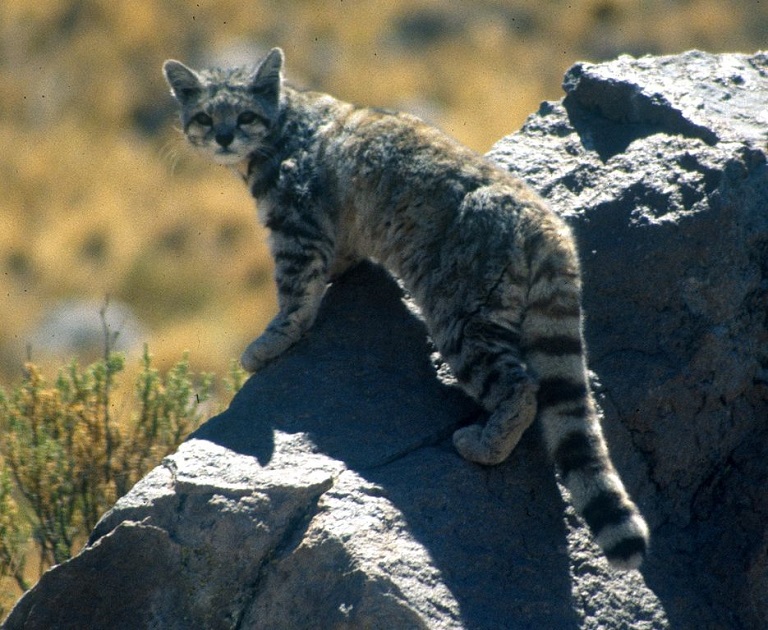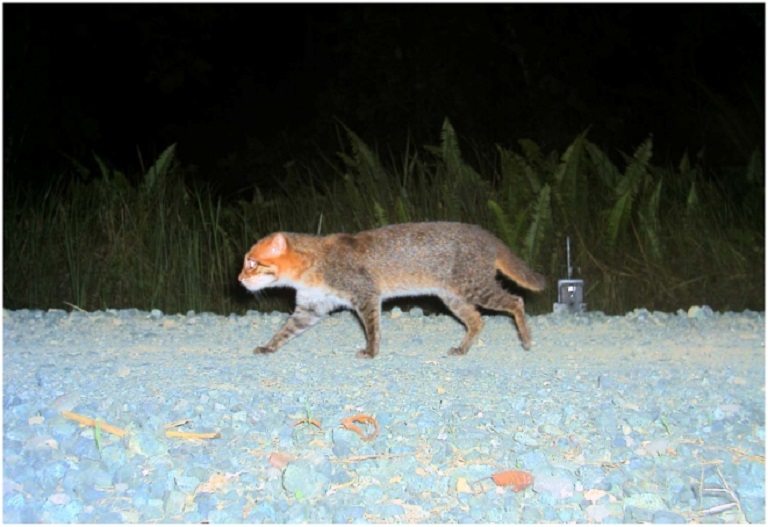- 13 percent of wild cats are considered Endangered, but none Critically Endangered, though many populations are on the decline.
- 34 percent of wild cats are considered Vulnerable and their survival will heavily depend on human intervention to protect habitat, enforce existing protective legislation, and preserve species from extinction.
- Conservationists face a lack of information in some cases, since very little is known for about about 20 percent of Endangered wild cats species.
Wild cats around the world face a long list of challenges as their habitat is degraded, their food supply diminished, and the cats are hunted for their body parts and meat. Despite notable conservation efforts, including National Geographic Society’s Big Cats Initiative founded with conservationists and filmmakers Dereck and Beverly Joubert, wild cats face a long road ahead.
According to the IUCN Red List‘s global status of the 38 existing species of wild cats (Felidae), five are Endangered. Here are those five most threatened wild cats by the current population numbers, as well as some notable current threats, existing conservation efforts, and global policy.
Borneo Bay cat (Catopuma badia)

Mature population: 2,200
Habitat: Forest-dependent, endemic to the Indonesian island of Borneo.
Threats: Poaching for the skin and pet markets, and habitat loss due to commercial logging and oil palm plantation plantings.
Conservation: Borneo Bay cats are fully protected under Indonesian law, but they remain one of the least studied wild cats in the world.
Status: Endangered with a declining population of mature individuals.
Andean cat (Leopardus jacobita)

Mature population: 1,378
Habitat: Primarily rocky and steep terrains, particularly in arid and sparsely vegetated areas of the high Andes.
Threats: Agricultural expansion, livestock impact, hunting, and other types of habitat loss and degradation.
Conservation: Community-based conservation, alongside protective legislation in four South American countries and focused lobbying by special interest groups have contributed to the Andean cat’s protection.
Status: Endangered with a declining population of mature individuals.
Iberian lynx (Lynx pardinus)

Mature population: 156
Habitat: Mediterranean shrubland containing dense rabbit populations, which makes up about 80-90 percent of its diet.
Threats: Homogenized landscapes, virulent diseases humans help spread that affect European rabbits.
Conservation: Supplementing rabbit populations, creating rabbit refuge landscapes, some translocation to avoid inbreeding given the small population.
Status: Endangered with an increasing population of mature individuals.
Tiger (Panthera tigris)

Mature population: 2,154-3,159
Habitat: Mainly found in the forests of tropical Asia.
Threats: Poachers and the illegal wildlife trade present the primary threat to tigers, who kill the animal to sell its body parts including skins, bones, meat and as part of tonics.
Conservation: In 2010, the 13 tiger range countries adopted a Global Tiger Recovery Program to coordinate efforts. The race is on to develop suitable tiger habitats in parts of tropical Asia.
Status: Endangered with a decreasing population of mature individuals.
Flat-headed cat (Prionailurus planiceps)

Mature population: 2,499
Habitat: Mainly wetland areas and coastal lowland areas throughout tropical Asia, particularly mangrove forests.
Threats: The main threats to the flat-headed cat include destruction and degradation of wetland and lowland forests.
Conservation: Fully protected under national legislation in Indonesia, Malaysia, and Thailand.
Status: Endangered with a decreasing population of mature individuals.
FEEDBACK: Use this form to send a message to the author of this post. If you want to post a public comment, you can do that at the bottom of the page.













